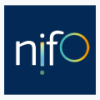The ISA2 programme, through the National Interoperability Framework Observatory (NIFO), is delighted to announce the publication of a new study providing a snapshot of the developments of digital public administration and interoperability in Europe.
The report articulates around four main chapters. The first one provides an in-depth analysis and clustering of more than 500 measures related to political communications, legal frameworks and infrastructures implemented in 36 European countries during the last three years in the field of digital public administration and interoperability. The chapter aims at providing a thorough analysis of how governments and public administrations are using innovation and new technologies as levers for their digital transformation, and how this transformation is leading towards better and more efficient public services. The analysis is based on the Highlights sections of the 2018 and 2019 Digital Government factsheets and of the 2020 Digital Public Administration factsheets. In addition, this chapter provides an overview of the main national actors responsible for digital public administration and interoperability oversight. In order to have a better visualisation of the main digital themes and priorities for the period 2017 – 2020, the report provides graphic representations of the findings, as to help the reader having a clearer picture of the main digital trends.
The report also explores the role played by the European Commission in shaping the landscape of digital public administration across Europe between 2017 and 2020, with an additional glimpse to the future and what is expected to come from the new Commission President. To this end, the second chapter tracks the evolution of the Commission’s priorities from the Juncker Commission to the Von Der Leyen Commission with regards to digital public administration and interoperability in the public sector, based on the recent political initiatives, legislative measures, and planned funding programmes. Key measures like the European Data Strategy, Shaping Europe's Digital Future, the Regulation on the Single Digital Gateway, and the Open Data Directive, among others, are examined to understand their intended goals, and to reflect on the current state-of-play of their implementation. After a similar examination of recent funding programmes, including prominent ones dating back to 2014, the report looks at the transition from the Juncker Commission to the Von Der Leyen Commission and how the new Commission intends to progress in the area of digital public administration and interoperability in future years.

The National Interoperability Framework Observatory, as the European observatory of interoperability, aims at providing valuable insights on the areas of excellence and recommendations on the areas of improvement vis-à-vis the role of interoperability in the ongoing digital transformation of European countries. Thus, through chapter three, the report provides a good summary of the results of the first data collection for the implementation of the European Interoperability Framework (EIF) by the 36 European countries included in the sample of the study.
Lastly, through chapter four, the report provides a snapshot of what comes next in the domain of digital public administration and interoperability, by identifying potential areas of improvement for the future, both at country-level and at Commission-level, and by suggesting interesting and promising focus areas for the future.

